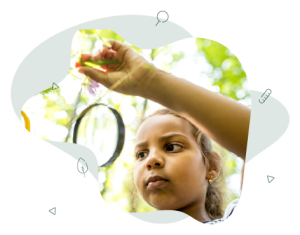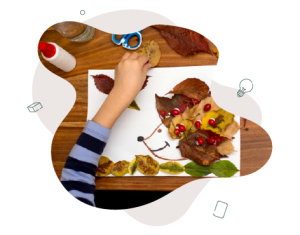18 Indoor play-based learning – resourcing
Indoor play-based learning is a hands-on, exploratory approach to learning where children engage in structured or free play activities inside a classroom or indoor space (Curtis & Carter, 2015). Building an understanding of how spaces can be arranged and resourced supports teachers to effectively implement play-based approaches indoors.
Resourcing the indoor space
Open-ended resources are materials that can be used in multiple ways, allowing for creativity, exploration, and problem-solving (Daly & Beloglovsky, 2016). They are an excellent resource to encourage imaginative processes in play and can include:
- blocks and construction toys,
- dominoes, dice and counters,
- natural materials like sticks, leaves, seedpods,
- lengths of material, yarn, wool, and string,
- mirrors, torches, or lightboxes, and
- boxes, crates, containers, and baskets.
Compare these with realistic props, such as plastic toy fruit, toy cars and plastic money, which may limit the opportunities for students to use their imagination to symbolically and creatively transform materials, objects, and spaces in their play.
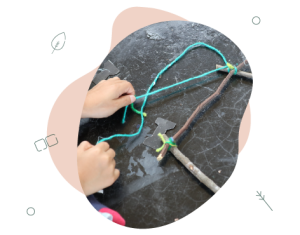
Open-ended resources used effectively provide an environment where students are enabled to manipulate and transform materials. Loose-parts play is often mobile and students are able to use their imagination to re-organise their play spaces.
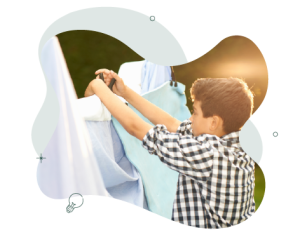
Research has also shown that plentiful open-ended materials and resources, along with carefully selected realistic props and objects, encourage more complex and engaging play (Rendon & Gronlund, 2017). For example, a sociodramatic playspace based on a supermarket scenario can contain:
- empty boxes (e.g. cereal, biscuits, etc),
- pretend cashier station made by the teacher or students, or
- money/credit cards from paper, cardboard, bottle tops, etc.
Having a supply of open-ended materials challenges the student to imaginatively transform them, while the realistic props provide a ‘stepping off’ point for students’ play. This supports imagination, symbolic thinking, creativity, communication of ideas, planning, and metacognition.
In construction and block play, much of the value is the manipulation and imaginative use of abstract materials, with selective use of realistic props such as vehicles and figures so that these enhance the play, not ‘drive’ it. For example, consider bringing in toy vehicles only after children have worked on a construction, to ensure that it is not limited to the building of simple ‘roads’ for driving cars or trucks. Complex constructive play supports an understanding of mathematical and scientific concepts, a sense of aesthetics, symbolic thinking, collaboration, creative expression, planning, metacognition, language, communication, and more.
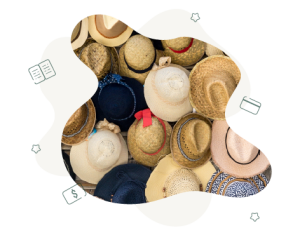
Drawing from a contextual example
In Reggio Emilio schools, students can work in art studio spaces, with a wide range of materials and resources to select for their creative use. Reggio Emilia principles and practices privilege students’ artwork in the display and availability of materials. Privileging children’s creativity values individual expression and is not restricted by stereotypical expectations for realistic reproduction. Open-ended and recycled art materials can be sourced from different local businesses that specialise in multiple off-cuts and excess materials from factories. These diverse resources can be used for recycled artwork:
- cotton spools,
- lengths of material,
- plastic containers, and
- timber shapes.
When teachers provide props and resources for play that recognisably relate to current lesson content, it provides meaningful links that can be further explored and extended. Books that have been read provide a foundation for scientific or mathematical concepts that can be experienced through play. Play experiences support discussions that have taken place in the classroom. The two areas are fundamental elements of an integrated curriculum across learning areas. This encourages students to make connections between ideas, reinforces concepts, and extends students thinking through their play. For example, students’ socio-dramatic play can be enriched by providing links to stories, with relevant props and materials for costumes. Another scenario might be tape measures, scales, architect planning documents and rulers added to block construction to further extend students’ mathematical concepts in their play.
